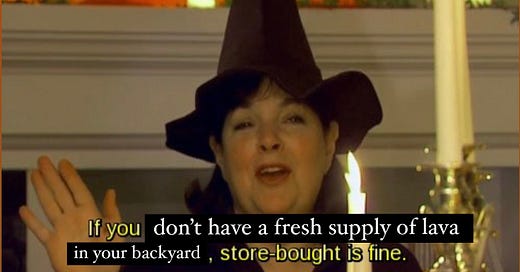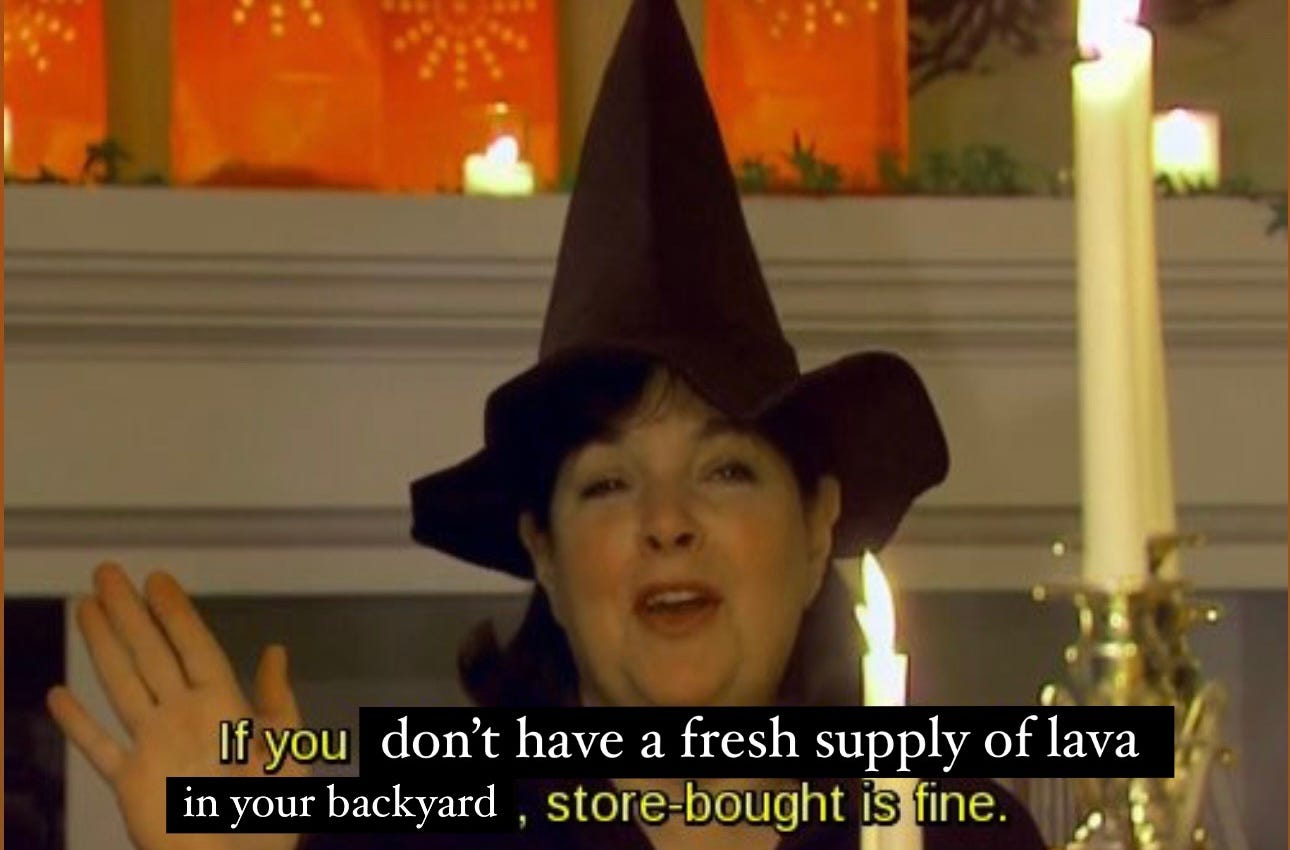Disasterology: January 2023
This newsletter is a compilation of recent disaster ~things~ that I think are cool, important, or otherwise of interest to people who are intrigued with disaster (broadly defined). There’s a little something for everyone!
Hello all and welcome to another edition of Disasterology!
This month we have something new for you — My name is John Carr, not Samantha Montano. A few weeks ago a circle of Samantha’s friends, disaster colleagues, and an official from the estate of Angela Lansbury met in Maine to hold an intervention. We all agreed that as a researcher, advocate, and defender of the Disasterology faith, her sanity must be protected and forced her to take a break from all disaster-related topics. We put locks on her bookcases, set her emails to auto-reply, and sent her off to a sunny beach destination to unwind. We also delegated some of her ongoing responsibilities to her team, hence why you are getting this newsletter from me.
Just a little bit about myself. I am an emergency management researcher from Maryville, Missouri, and a friend of Samantha’s from grad school in Fargo. My day job focuses on supporting emergency managers at the local and state level through trainings and research, but in my spare time, I like to learn about how disasters affect popular culture, our sense of place, and individual identities.
As a resident of Missouri, I have struggled most of my life with my state’s identity. We don’t have the Alamo like Texas, or Stephen King like Maine. We claim to have been part of refining Jazz, but let’s be honest that is New Orleans’ thing. What we do have, however, is food. Some of the best barbeque in the world, the birthplace of burnt ends, and home to some top-notch breweries. The food writer Calvin Trillin once said that Kansas City has the best restaurants in the world, and anyone who disagrees likely hasn’t been here that often.
The older I get the more I realize that food is the way I connect to where I live, and one of my favorite ways to connect with other cultures. Unfortunately, I can’t make a living off of food writing. I do, however, make every attempt to bring it into my disaster work whenever I can so I can live out my dream of being a combination of Alton Brown and Dennis Mileti.
This month I would like to share with you some of my favorite stories about food and disasters. In the words of Monty Python, and now for something completely different!
The Recipe that Saved Parmigiano-Reggiano Cheese
Massimo Bottura is one of my favorite food personalities to follow. Bottura is a world-renowned chef from Italy and the chef at the Three Michelin Star Osteria Francescana in Modena. His relentless energy and humor are sure to put a smile on your face. Check out his Chef’s Table episode, or even skim through his Instagram account.
In May 2012, the Emilia-Romagna region of Italy was struck by a 6.0 Earthquake, and two 5.2 aftershocks. Damages were extensive, with roughly 27 deaths, hundreds injured, and nearly 50,000 left without homes.
The earthquake left the local economy at a tipping point. This region is unique for food, in that the geography and soil create some of the best ingredients in the world. One of those famous exports is Parmigiano-Reggiano cheese. The exports that the region relies on often require aging under specific temperatures and humidity to ensure quality and trademark flavors. Among the damage were hundreds of thousands of wheels of Parmigiano-Reggiano, now cracked and in pieces, amounting to over $200 million of product. If the cheese was not quickly processed and shipped, all would be lost.
Massimo knows how to rebuild from broken pieces. When someone dropped the last lemon tart at his restaurant, he turned it into abstract art, becoming one of his trademark dishes. This problem was no different.
Using his celebrity, Massimo shared a recipe for risotto cacio e pepe that used the region's cheese, as well as a list of local brands. Anyone wanting to support earthquake recovery could simply go to their grocery store, buy the ingredients for the meal, and the funds would go directly back to the region's recovery. Word went fast with restaurants across the globe selling dishes featuring the cheese. Soon every broken wheel of cheese was out the door. No jobs lost, and no businesses closed!
Covid-19 and the Loss to America’s Chinatowns
If you are reading this newsletter you are likely well-versed on the pandemic and its lingering effects on our culture globally. When the pandemic began, we saw restaurants all around us closed as social gatherings, spending, and the economy declined. What you may have missed was the disproportionate effects to our cities’ Chinatowns. These restaurants were hit threefold as restaurant dining went down, cities mandated closures, and Asian Americans became the targets of racism and xenophobia. These neighborhoods serve an important place in our country, as a center for Chinese communities and culture often for over a century. The “Chinese food” at your local takeout is likely a product of Chinatown restaurants tailoring dishes to American palates, eventually finding its way to your town. These same restaurants that had been owned for generations closed their doors, uncertain if they would ever open again.
Chef and advocate Grace Young told the story of these restaurants in her youtube series Chinatown Stories. She met with business owners and employees to share their stories and advocate for supporting these communities.
“It was heartbreaking to see restaurants empty, shops, no customers. There was no strategy. There was no plan. But as I saw things happening I would just jump in and try and do as much as I could.”
Young’s work soon reached a wider audience with local news and NPR’s All Things Considered. For her work, Young was recognized with the James Beard Humanitarian of the Year award, the Julia Child Award, and a host of other accolades.
Things have continued to steadily recover, and Young continues to advocate for Chinatowns nationwide. Her interviews are an important contribution both to the recovery of the area, as well as the content disaster researchers will rely on as we track the recovery of these communities in the future. I encourage you to watch her videos to learn more about her work.
Tea Culture as Mitigation
Tea has been a charged issue in the United States. We are, after all, a coffee country. Coming from a small farming town in Missouri, the most I knew about tea prior to college was that we had dumped it in Boston Harbor. What we didn’t hear is that tea may very well have been the backbone that the British Empire was built on. Well not so much tea, as hot water.
Dr. Fransisca Antman argues that tea culture in 18th-century England led to “an unintentional increase in consumption of boiled water, thereby reducing mortality rates”. By effectively having a permanent boil order, common waterborne diseases were kept at bay, increasing lifespans and overall populations. There is still more to be said about England and their empire and their tea, but we will leave it at that for now.
Recipes
If this newsletter has gotten you hungry, here are a few of my favorite disaster-related recipes:
Iceland’s Volcano Bread- Iceland is one of my favorite countries to study, mostly because of its history of volcano-related disasters. Their volcano culture extends all the way to their food, as is evidenced by their unique rye bread. It is a dense and spongy bread that goes well with savory toppings or a light spread of butter.
Massimo Bottura’s Risotto Cacio e Pepe- Ok so we already had this one but it is worth featuring again. It is easy, straightforward, and simply delicious.
Steak, Eggs, and Gravy from Twister- I would be remiss if I did not represent my homeland in these recipes. Andrew Rea is a YouTube Chef and host of Binging with Babish, which began as a channel focused on recreating iconic meals from the movies. His recipes are not just Instagram-worthy, but are genuinely tasty meals.
Maangchi’s Kimchi- To all the vegans out there, I see you. Kimchi is a shelf-stable and healthy food and I believe it deserves to be right next to peanut butter on Americans’ standard list of disaster preparedness supplies (especially considering how grocery prices keep going up). If nothing else check out this video to see one of my favorite YouTube chefs, Maangchi!
Final Thoughts
If you liked what you read here, follow me on Twitter at @JohnCarrEM. I am always on the hunt for new stories about food and disasters. If you have a story I need to hear about, feel free to message me or send me an email at JohnCarrEM@gmail.com
The End Bits
I would love it if you’d forward this to your friends, post on social media, and undertake any other form of newsletter sharing you deem appropriate.
In case you signed up for this newsletter without knowing who I am (a bold choice!) you can read my book Disasterology: Dispatches From The Frontlines of The Climate Crisis to catch up! You can read a USA Today review here, order it here, or get it as an audiobook here. You can also find more from me on my blog, listen to this episode of Ologies, or follow me on Twitter and Instagram where I impulsively narrate my every thought. And now TikTok.
Finally, this newsletter is ~FREE~. I plan on keeping it that way because eliminating barriers to disaster knowledge is important. However, I’ve created a “paid subscriber” option for $5 a month or whatever you’d like to give if you’re interested in supporting this work.




